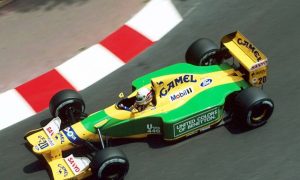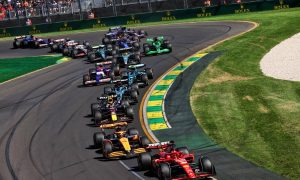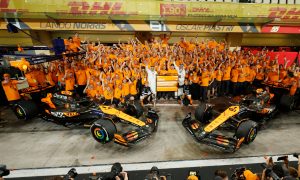France no longer has a Formula One race, the German Grand Prix has been dropped from this year’s calendar, and Monza’s future looks bleak at best. Meanwhile, Circuit de Barcelona-Catalunya held two F1 pre-season tests over the winter and has just hosted its 25th Spanish Grand Prix last Sunday. It has also renewed its agreement with the sport until 2019 and is seeing two extra days of action thanks to the first in-season test. Focus on a venue that has quietly established itself among the F1 cornerstones.
“I think most F1 drivers would say we’ve all done too many laps around here, but don’t get me wrong, it’s a great circuit.” Thus recently spoke Red Bull driver Daniel Ricciardo, echoing the sentiments of many fellow racers when it comes to assessing the 2.9-mile circuit undulating around the hills of Montmelo.
Initially scheduled to concur with the 1992 Summer Olympic Games, the track was ready one year earlier and held its maiden Formula One race in September 1991.
The first edition immediately captured the fans’ attention thanks to the electric wheel-to-wheel battle between Ayrton Senna and Nigel Mansell.
Featuring a wide variety of corners, a long pit straight and several gradient changes, the venue has gradually grown into the ultimate test of F1 cars’ aerodynamics. While the F1 community travelled to Bahrain for its 2014 pre-season tests, teams elected to come back to Circuit de Barcelona-Catalunya for this year’s preparations with two four-day tests scheduled at Montmelo.
With F1 cars running from early morning until late afternoon, these events gave fans and onlookers the opportunity to watch drivers in action for extended periods of time.
“44,000 fans attended the 8 days of the test, with 750 accredited media and over 20 international TV,” the circuit’s press officer Miriam Ramos told F1i.
These figures could have been higher but for Fernando Alonso’s crash during the first Barcelona session and subsequent absence from the final pre-season test.
“Attendance in the second test was lower than in the first test. We think that a lot of people decided not to come to the circuit because Alonso didn’t attend the second test.”
Although Circuit de Barcelona-Catalunya hosts a myriad of motorsport events throughout the racing season, Formula One remains by far the main source of revenue for the region.
“The economic impact of the 2014 F1 Grand Prix in Catalonia was €188million. The economic impact of all the sports activities at the circuit during 2014 was €332m.”
As for the venue’s own turnover, “approximately 52%” comes from the F1 activities.










